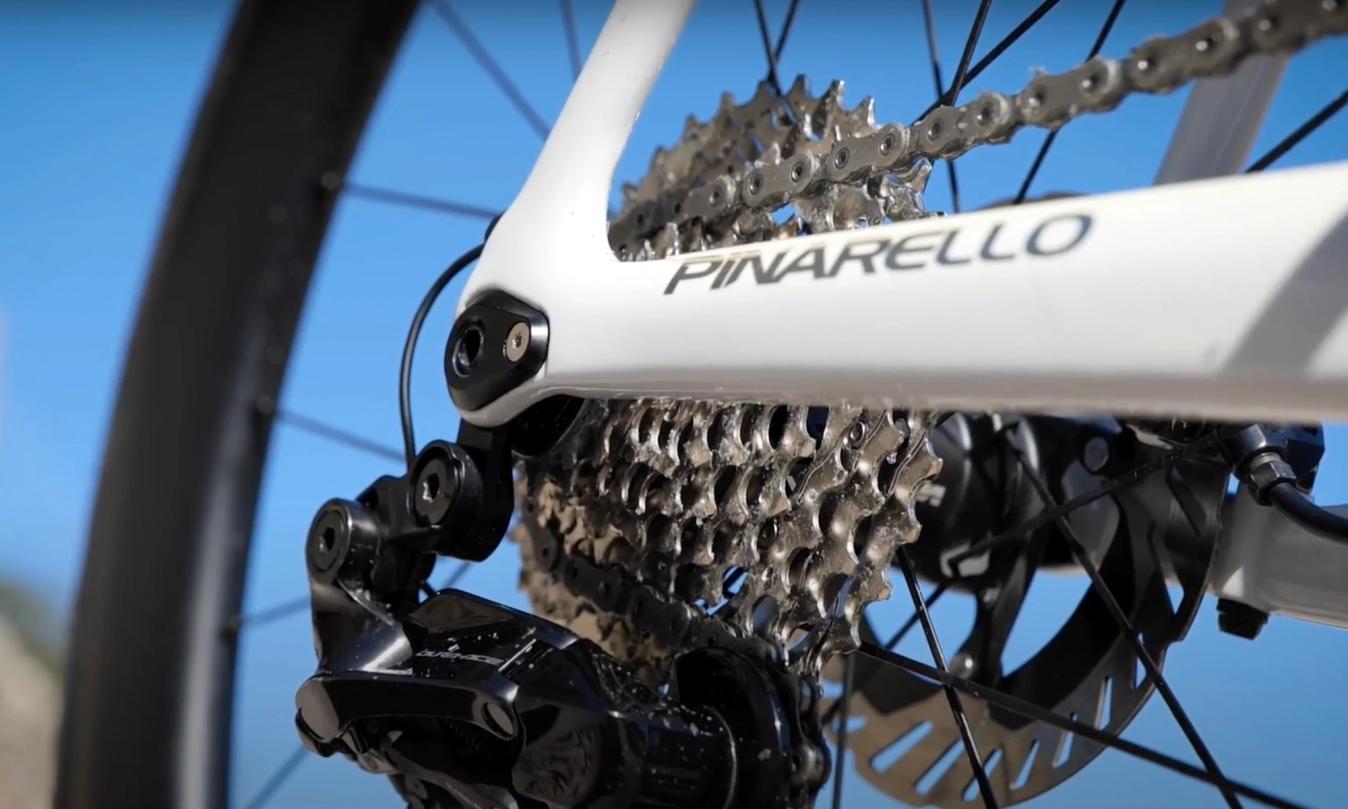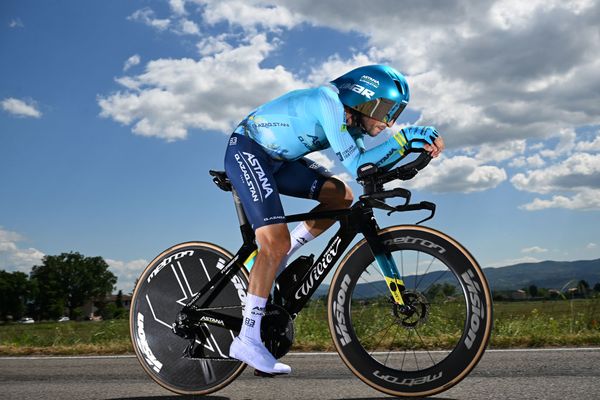Can easier gears actually help you ride faster?
Does this counterintuitive logic really hold any water in the real world? Alex and Ollie put it to the test
Alex Hunt
Junior Tech Writer
If you take your road bike and compare it to a bike from 30 years ago, one of the first major differences you are going to come across will be the gearing.
Typically a retro bike would have a cassette with the biggest sprocket being 21 or 23 teeth. Compare that to a modern bike, and you will probably find that it will have at least a 30 tooth sprocket with the potential for 36 in some cases.
Read more: Why you shouldn't set your road bike up like a pro cyclist
But if easier gears allow you to pedal at slower speeds, how can they be used to actually let you ride faster? On the surface it seems like counterintuitive logic to have gears for slow speeds fitted to your bike if you want to increase your speed. One look at pro racers in the modern era and you’ll see that even with these more compact gearing offerings new climbing records are seemingly set here, there and everywhere.

© GCN
Modern cassettes dwarf the offerings of yesteryear allowing riders to keep a high cadence even on steep gradients
One of the benefits running easier gears is that it will give you the ability to remain in your preferred band of cadence as the road points upwards and gets steeper. Although we all have slightly different natural cadence preferences, whatever we naturally choose is often the most efficient for us. If we find ourselves running out of gears on a steep pitch of a climb the only other way we can continue to pedal is by decreasing our cadence.
As your cadence drops, it becomes less and less efficient and begins to transfer a large portion of the cardiovascular load onto your muscles. This moves the effort away from control and into a far less sustainable position that will ramp up the rate of accumulated fatigue.
What is power?
It is important when looking at gearing, cadence and power to understand the intricate relationship between them all. In order to do this, firstly we need to understand just how power is developed and measured. The unit of power is the Watt, which is equivalent to one joule of energy per second. A Watt is produced through a combination of the force put through the pedals multiplied by the amount of times this force is applied.
- Read more: Should we all be doing ramp FTP tests?
In other words, to ride at the same power, a lower cadence is going to require an increased force on the pedals, and equally vice versa if you increase your cadence. As you slow your cadence down and the force required increases, this puts more strain on the muscle fibres in your leg muscles, which eventually leads to muscular fatigue.

© GCN
Being forced to ride at a low cadence will put a lot of muscular fatigue on your leg muscles
At the other end of the spectrum, riding at an increased cadence will have you putting very little muscular force through the pedals but will put an increased load on your cardiovascular system and your lungs. Therefore finding the right middle ground is important.
The test
In order to collect some real world data on the topic, Alex Paton takes on a three kilometre section of a climb aiming to ride at a fixed power of 200 Watts. The first time up the climb will be on a bike with a maximum climbing gear of 36 x 28 which equates to a ratio of 1:1.29. On his second ascent of the climb a maximum climbing gear of 36 x 36 or a 1:1 gear ratio will be used.

© GCN
Gear ratios describe the relationship between how many revolutions the rear wheel will go around, for every one complete revolution of the cranks
Out on the road the comparison between gear ratios is obvious with Alex’s leg speed clearly significantly faster when using the easier gearing.
Something that Alex himself noticed whilst performing the test was that at the higher cadence, it felt like the effort had been shifted away from his legs with the effort instead coming from his breathing and cardiovascular system.
The results
Over the three kilometre climb Alex’s time, average power, heart rate and average cadence were all recorded in order to give a well rounded insight into the differences between both gear configurations.
Interestingly, although there was no difference in time or power between both efforts, the easier geared effort had Alex’s heart rate elevated by eight beats per minute over the low cadence run. This makes sense, as more of the effort from the high cadence test is generated by the cardiovascular system rather than the muscles. It is also worth noting that Alex’s perceived exertion was higher for the easier geared test as well, which he attributed to the increased breathing and heart rate that it required.
It would be easy to look at these results and think that easier gears are not a good idea, however this is in isolation to this test. If Alex was to conduct a test again but at a maximal output or if fatigue resistance was considered, it is likely that the results would be different.
Considerations
If you are considering upping your gearing to allow for the benefits of easier ratios to be experienced there are a few things to bear in mind.
First up is compatibility. If you are going from a 25 or 28 tooth cassette up to a 34 or 36 it is likely that the cage length of your derailleur will not accommodate the new cassette. In order to make it fit, a new longer rear derailleur will need to be fitted.
Secondly, you will need to fit a different length chain to the bike, because as the cassette is bigger it requires more chain in the system for it to work without stretching the limits of the rear derailleur. If you need to do this, it is always advised that a whole new chain is fitted as you don't want to mix worn and new chains together.

© GCN
Increasing your gear ratio, might not be as simple as putting a new cassette on so it is important to make sure that the rest of your drivetrain is compatible
The total weight penalty for fitting a new cassette with wider gearing, a longer chain and the new derailleur can quickly amount to a few hundred grams. Although this may sound like a lot, in terms of noticeable feel or performance difference the result will be negligible and hard to detect.
The final consideration that might have you second guessing if going to a larger cassette is right for you is the spacing between the gears. Because the gears on a wide ratio cassette cover a bigger range, the only way to accommodate this is by making the jumps between each gear bigger. The end result of this means that when you change gear you cadence will change by a more noticeable amount. So if you struggle to ride at a wide range of cadence then a large ratio cassette might not necessarily be for you.
In conclusion
Easier gears on your bike are certainly a good thing, and on the right gradients they will allow you to ride faster. If you are a naturally high cadence rider, the benefits of easy gearing will be more apparent. It can also take some time to adapt to spinning up a climb if you are accustomed to grinding up steeper gradients. As you adapt it will allow you to ride with less accumulated fatigue, which will come more and more pronounced over time.










.jpg?w=600&auto=format)
